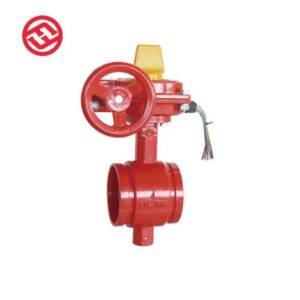Butterfly valve fire protection systems play a critical role in pulse-jet dust collectors used in industrial applications by providing a means to isolate the dust collector during fire incidents.
Here’s how they function within pulse-jet dust collectors:
- Isolation of Dust Collector: In pulse-jet dust collectors, a network of ductwork connects the collector to various processing equipment, such as industrial furnaces, crushers, or grinders. Butterfly valves are installed at strategic points along this ductwork, including the inlet and outlet of the dust collector.
- Normal Operation: During normal operation, the butterfly valves remain open to allow the flow of dust-laden air into the collector for filtration. The pulse-jet cleaning system periodically releases short bursts of compressed air to clean the filter media and dislodge accumulated dust, allowing it to fall into a collection hopper for disposal.
- Fire Detection: In the event of a fire within the processing equipment or ductwork connected to the dust collector, fire detection systems such as heat detectors, flame detectors, or smoke detectors trigger an alarm to alert operators of the fire.
- Emergency Shutdown: Upon detection of a fire, the fire protection system initiates an emergency shutdown sequence. This sequence includes closing the butterfly valves located at the inlet and outlet of the dust collector to isolate it from the rest of the ductwork and processing equipment.
- Prevention of Fire Spread: By closing the butterfly valves, the fire protection system prevents the spread of fire and combustion gases from the affected equipment or ductwork into the dust collector. butterfly valve fire protection This helps contain the fire within a localized area and minimizes the risk of a dust collector explosion or fire propagation throughout the facility.
- Protection of Personnel and Equipment: Isolating the dust collector during a fire event helps protect personnel, equipment, and surrounding structures from the hazards associated with dust collector fires, including the release of toxic gases, dust explosions, and structural damage.
- Manual Override: In some systems, operators may have the option to manually override the automatic closure of the butterfly valves in certain situations, such as false alarms or maintenance activities. This allows for flexibility in system operation while maintaining safety and compliance with fire protection regulations.
Overall, butterfly valve fire protection systems in pulse-jet dust collectors serve to safeguard industrial facilities against the risks of dust collector fires and explosions. By providing a means to isolate the dust collector during fire incidents, these systems help protect personnel, equipment, and property while ensuring continued compliance with safety standards and regulations.
